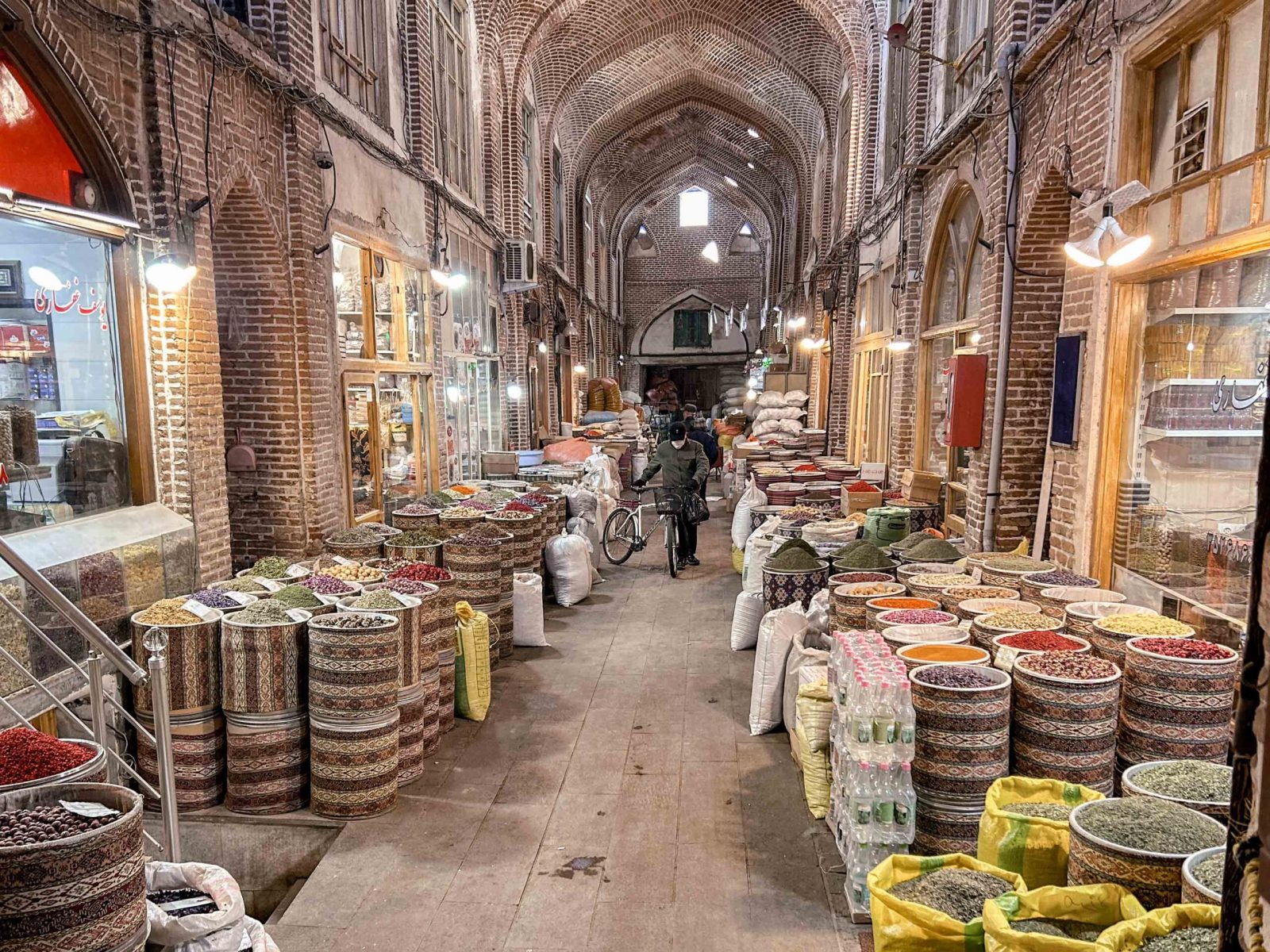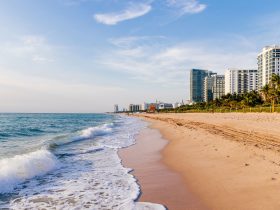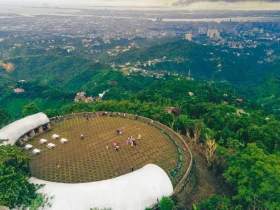Nestled in the East Azerbaijan province, Tabriz stands as a testament to Iran’s rich tapestry of history, culture, and architecture. From its bustling bazaars to serene parks, this city offers a unique blend of ancient traditions and modern vibrancy, making it a must-visit destination for travelers seeking an authentic Iranian experience.
📊 Essential Information
| Attribute | Details |
|---|---|
| Official Language | Persian (Farsi) |
| Local Language | Azerbaijani (Azeri) |
| Population (2025 est.) | Approximately 1,695,670 |
| Area | 216 km² |
| Country | Iran |
| Continent | Asia |
| Local Time | IRST (UTC+3:30) |
| Currency | Iranian Rial (IRR) |
| Plug Type | Type C and F (230V, 50Hz) |
| Average Annual Temperature | 11.9°C (53.4°F) |
| Climate | Continental, semi-arid |
| Vegetation | Steppe and mountainous flora |
| Major Industries | Textiles, machinery, agriculture |
| Country Code | +98 |
| City Phone Code | 041 |
🏛️ Top Attractions
- Tabriz Historic Bazaar Complex: A UNESCO World Heritage Site, this sprawling bazaar is one of the oldest in the Middle East, offering a labyrinth of shops and traditional architecture.
- Blue Mosque (Kabood Mosque): Known for its stunning blue tiles and intricate calligraphy, this 15th-century mosque is a masterpiece of Islamic architecture.
- El Goli Park (Shah Goli): A picturesque park featuring a large artificial lake and a central pavilion, perfect for leisurely walks and picnics.
- Azerbaijan Museum: Home to a vast collection of archaeological artifacts, this museum offers insights into the region’s rich history.
- Arg of Tabriz (Alishah Citadel): The remnants of a massive 14th-century fortification, symbolizing the city’s historical significance.
- Maqbaratoshoara (Poets’ Mausoleum): A mausoleum dedicated to revered Iranian poets, reflecting the city’s literary heritage.
- Eynali Mountain: Offering panoramic views of Tabriz, this mountain is a popular spot for hiking and relaxation.
- Colorful Mountains of Tabriz: Known for their vibrant hues, these geological formations provide a unique natural spectacle.
✈️ Getting There & Around
Arrival:
- By Air: Tabriz International Airport (TBZ) connects the city to major domestic and select international destinations.
- By Train: Regular train services link Tabriz to cities like Tehran and Mashhad.
- By Bus: Long-distance buses operate between Tabriz and various Iranian cities.
Local Transportation:
- Metro: Tabriz Metro Line 1 is operational, facilitating urban transit.
- Taxis: Widely available; it’s advisable to agree on fares beforehand.
- Buses: An extensive network covers most city areas.
🏨 Accommodation Options
Luxury:
- Tabriz International Hotel: Offers premium amenities and central location.
- Gostaresh Hotel: Known for its comfortable rooms and excellent service.
Mid-Range:
- Pars Hotel: Provides quality accommodations at reasonable prices.
- Shahriar Hotel: Features modern facilities and convenient access to attractions.
Budget:
- Darya Hotel: A budget-friendly option with basic amenities.
- Morvarid Hotel: Offers affordable stays near the city center.
🍽️ Dining & Cuisine
Local Dishes:
- Koofteh Tabrizi: A large meatball dish filled with nuts and dried fruits.
- Dizi (Abgoosht): A traditional lamb and chickpea stew.
- Ash-e Doogh: A yogurt-based soup with herbs and rice.
- Tabrizi Baklava: A sweet pastry made with layers of filo, nuts, and syrup.
Recommended Restaurants:
- Haj Ali Restaurant: Renowned for authentic Iranian dishes.
- Shater Abbas: Offers a variety of traditional meals in a cozy setting.
- El Goli Restaurant: Located within El Goli Park, providing scenic views and diverse menu options.
🏞️ Natural & Geographical Highlights
- Sahand Mountain: An extinct volcano offering hiking opportunities and winter sports.
- Lake Urmia: Once one of the largest saltwater lakes in the Middle East, located west of Tabriz.
- Kandovan Village: A unique village with homes carved into volcanic rocks, resembling Cappadocia.
🧑🎤 Notable Personalities
- Shahriar: A celebrated Iranian poet known for his works in both Persian and Azerbaijani.
- Parvin E’tesami: One of Iran’s prominent female poets, born in Tabriz.
- Mohammad-Hossein Shahriar: An influential literary figure with a significant impact on Iranian poetry.
🌐 Neighboring Cities & Regions
- Marand: A city north of Tabriz, known for its historical sites.
- Urmia: Located west of Tabriz, across Lake Urmia.
- Ardabil: Situated to the east, famous for its natural beauty and historical monuments.
💡 Insider Tips
- Learning basic Persian phrases can enhance your travel experience.
- Carry cash, as many establishments may not accept credit cards.
- Dress modestly in accordance with local customs.
- Spring (April to June) and autumn (September to November) are ideal times to visit due to pleasant weather.
❓ Frequently Asked Questions
- Is Tabriz safe for tourists?
Yes, Tabriz is generally safe for tourists. Like any city, it’s wise to follow local advice and stay aware of your surroundings. - What is the best time to visit Tabriz?
The best times are spring (April to June) and autumn (September to November) when the weather is mild and pleasant. - Do I need a visa to visit Iran?
Most foreign nationals need a visa to enter Iran. Check with the Iranian consulate or embassy in your country for the latest requirements. - Can I use credit cards in Tabriz?
No, international credit/debit cards are not accepted in Iran. You must carry cash (Iranian Rial) or use a local prepaid tourist card. - Is English widely spoken in Tabriz?
English is not widely spoken. Learning a few Persian or Azerbaijani phrases will help greatly. - Are there dress codes for tourists?
Yes. Iran has a modest dress code—women should wear a headscarf and loose-fitting clothes; men should avoid shorts. - What souvenirs can I buy from Tabriz?
Handmade carpets, saffron, dried fruits, traditional sweets like Tabrizi Baklava, and copperware are popular souvenirs. - How can I travel from Tehran to Tabriz?
You can fly (about 1 hour), take a train (approx. 8–10 hours), or use long-distance buses (10–12 hours). All are affordable options. - Are there internet restrictions in Tabriz?
Yes, some social media and websites are restricted. Using a VPN is common among travelers. - Can I drink tap water in Tabriz?
Tap water is generally safe, but bottled water is recommended for short-term visitors.







Leave a Review